Ata-ul-Haye Nasir, Al Hakam
9/11 and its background
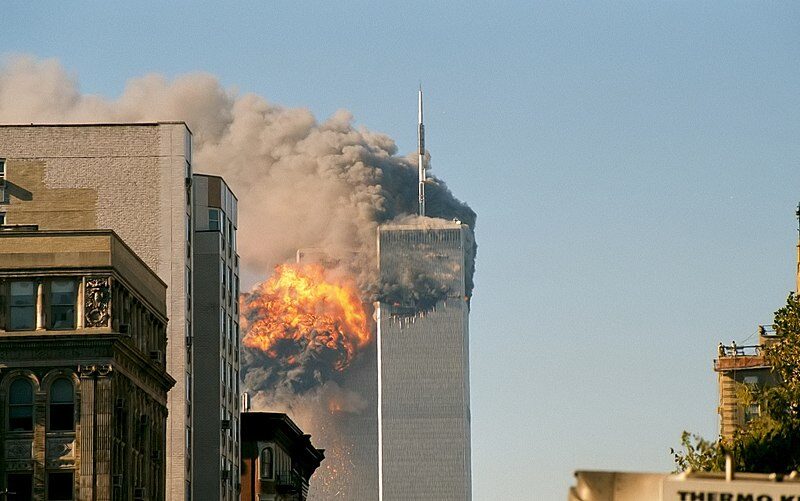
11 September 2001, a day that brought a drastic change on the world stage, as it shook the world in an unprecedented manner. Attacks were carried out by al-Qaeda on the Twin Towers in New York City and the US department of defence headquarters at the Pentagon, resulting in hundreds of deaths and many injuries as well.
But the questions are: What was al-Qaeda? Who helped in its formation? Why and how did they confront a major power like the US?
In 1973, Mohammed Daoud Khan had taken power in Afghanistan by overthrowing the monarchy of King Zahir Shah, with the support of the People’s Democratic Party of Afghanistan (PDPA), and established the Republic of Afghanistan. Later on, in April 1978, the PDPA overthrew Daoud Khan in what is known as the Saur Revolution and a new government was established, the Democratic Republic of Afghanistan. (“Afghanistan: 20 years of bloodshed”, http://news.bbc.co.uk/)
This was followed by activities of some scattered rebellion, and while being “well aware of Soviet support for the Democratic Republic of Afghanistan, the United States immediately began discussing aid for the incipient rebellion.” (Parenti, Christian. “America’s Jihad: A History of Origins”, Social Justice 28, no. 3 (85) (2001): 31–38. www.jstor.org/stable/29768089)
On 30 March 1979, the former Director of the Central Intelligence Agency, Robert Gates attended a meeting where the Under Secretary of Defence, Walter B Slocombe asked whether “there was value in keeping the Afghan insurgency going, [and] sucking the Soviets into a Vietnamese quagmire.” And then, America was soon channelling aid to the rebels. In an interview in 1998, with Le Nouvel Observateur [now L’Obs], the former national security advisor to President Carter, Zbigniew Brzezinski explained that the US began aiding the tribalist uprisings as early as six months before the Soviet invasion. (Ibid.)
“It goes from meddling and funneling and agitating to outright saying, ‘Okay, we need to support the mujahedeen’, and allying themselves with the anti-communist resistance movement.” (“The history of US intervention in Afghanistan, from the Cold War to 9/11”, www.vox.com)
The People’s Democratic Party of Afghanistan was factionalised. A seemingly pro-Western faction influenced by Hafizullah Amin, usurped the main faction of the group in mid-1979. Fear of US support for Amin’s faction led the Soviet government to order the invasion. The Soviets captured Kabul Airport on 24 December 1979, and the army crossed the border on the same day. (“Defeat of the Soviet Union in Afghanistan”, www.bbc.co.uk)
The militant groups – the so-called mujahideen – opposed the Soviet occupation, while the Afghan army supported the Soviet Red Army. The mujahideen were “heavily armed as they were supplied by China and the USA and they received training from the CIA. The mujahideen employed guerrilla tactics against the Red Army. Using hit and run attacks they gained control of the rural and mountainous areas of Afghanistan.” (Ibid.)
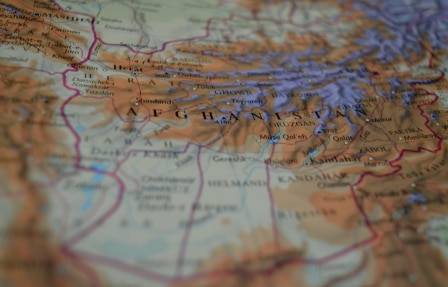
Mentioning the CIA’s support for the mujahideen, Tim Weiner, an American author stated:
“The CIA smuggled billions of dollars in weapons into the hands of the Afghan resistance. That bled the Red Army, leaving at least 15,000 soldiers and commandos dead on the battlefield”, and the White House, CIA and State Department documents show that in 1980, President Carter’s CIA spent close to $100 million shipping weapons to the Afghan resistance. (“History to Trump: CIA was aiding Afghan rebels before the Soviets invaded in ’79”, www.washingtonpost.com)
He further states that the documents reveal that the CIA proposed on 28 February 1979 that it could buy “lethal military equipment” for the mujahideen of Afghanistan. Six weeks later, the CIA started a series of black propaganda operations designed to support the tribal revolt in Afghanistan. Carter signed a secret order on 3 July authorising the CIA support to Afghan insurgents, either in the form of cash or non-military supplies. Consequently, the Afghan insurgency grew. (Ibid)
The US funding for the mujahideen continued to increase.
“Matthew Erulkar, a lobbyist for the Afghan rebels and director of the ‘Afghan American Educational Fund’, said the US has spent $380 million to $400 million on behalf of the resistance since 1979, most in the last two years. Of that, he estimates, only about $100 million in weapons and other military hardware reached the fighters.” (Terry Atlas, “US Aid Pipeline to Afghan Rebels Springing Leaks”, Chicago Tribune, 3 February 1985)
The ‘mujahideen’ was not a single group, in fact, they were four different kinds of groups that roughly aligned in resisting the new government. The US pressured Egypt to release a group of extremists that it had arrested. One of those arrested was Ayman al-Zawahiri.
The US started to bring in militants from Yemen and Saudi Arabia, who then went on to form al-Qaeda. Once the US and the Soviet Union withdrew their influence from Afghanistan, the country fell into a civil war, giving birth to both al-Qaeda and the Taliban. (“The history of US intervention in Afghanistan, from the Cold War to 9/11”, www.vox.com)
From 1979 to 1989, an estimated one million civilians, 90,000 rebels, 18,000 Afghan troops, and 14,500 Soviet soldiers were killed. (“The Soviet War in Afghanistan, 1979-1989”, www.theatlantic.com)
Unfortunately, the US support and upbringing of mujahideen during the last quarter of the twentieth century went on to haunt them a few years later, in the form of the 9/11 attacks.
The Taliban had promised to restore peace and security and enforce what they considered the “Islamic” law. However, they had nothing to do with Islam, they tarnished the image of that peaceful religion, which advocates peace, harmony, love and justice.
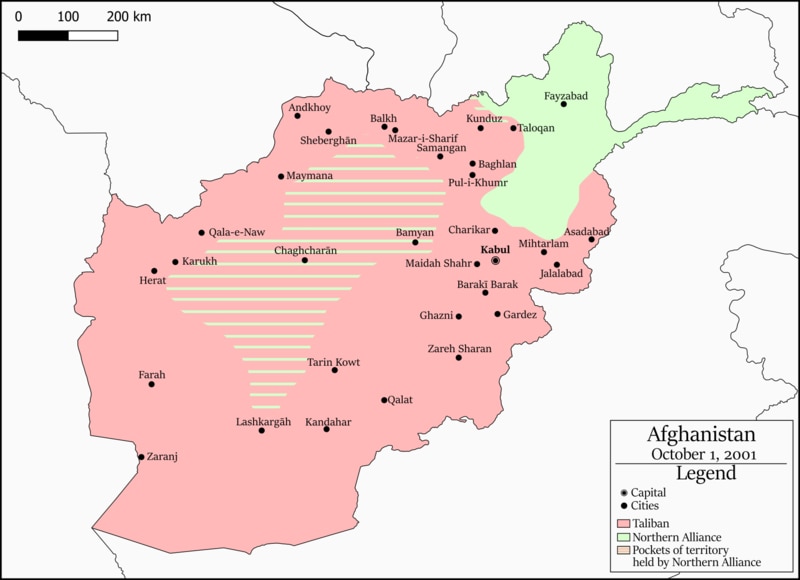
The US invasion
The Taliban had been ruling over three-quarters of Afghanistan since 1996, and on the US demand, they did not hand over the al-Qaeda leader Osama bin Laden. Thereafter, the US invaded Afghanistan on 7 October 2001, soon the Taliban were removed from power, and a new government came into being.
The US had thought that they could easily overcome the Taliban impact, however, they proved to be wrong.
The new West-backed government in Afghanistan failed to bring any stability to the country, and there were continuous clashes between NATO and the Taliban. The consequence was that it was the civilian population which suffered the most.
On 1 December 2009, the then US president, Barack Obama announced to send 30,000 additional troops to Afghanistan in the coming months, but he vowed to start bringing American forces home in the middle of 2011. He added that he could “bring this war to a successful conclusion”. (“Obama Adds Troops, but Maps Exit Plan”, www.nytimes.com)
In 2010, there were around 150,000 NATO troops in Afghanistan, but the casualties continued to increase. In 2011, Obama announced the plan to withdraw US troops from Afghanistan. Three years later, some 34,000 soldiers were left in the country.
By 2017, the US troops level had declined to about 8,400. The civilian casualties rose as the Taliban expanded their military campaign in different parts of the country. As a result, the new US president, Donald Trump sent 3,000 US troops to Afghanistan. The US also stepped up air raids, resulting in a dramatic increase in civilian casualties. (“From the 2001 fall of the Taliban to 2020 Afghan peace talks”, www.aljazeera.com)
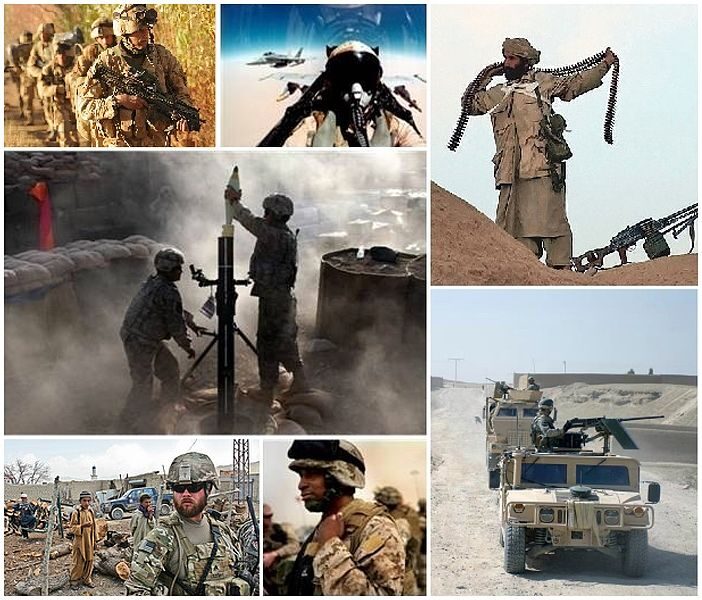
The US-Taliban talks
In October 2018, US officials and Taliban representatives held their first meeting in Doha, and the talks continued into the next year for eight rounds. Despite the talks, violence intensified. In September 2019, Trump abruptly suspended the talks with the Taliban following the killing of a US soldier. The US president also cancelled planned secret meetings at Camp David with the Taliban. Following the suspension of the talks, the Taliban intensified attacks, with the last quarter of 2019 becoming one of the bloodiest since the US invasion in 2001. (Ibid)
In February 2020, the US and NATO allies agreed to withdraw all troops within 14 months if the militants upheld the deal, and the militants also agreed not to allow al-Qaeda or any other extremist group to operate in the areas they controlled. (“Afghan conflict: US and Taliban sign deal to end 18-year war”, www.bbc.co.uk)
The withdrawal
Despite grave concerns from Afghan officials over the government’s vulnerability to the Taliban without international support, Joe Biden announced in April 2021 that all American forces would leave the country by 11 September.
On 31 August 2021, the US withdrew its last remaining troops and concluded a huge and chaotic airlift that evacuated more than 120,000 civilians but left thousands of others stranded. The US president, Joe Biden said in a statement, “Now, our 20-year military presence in Afghanistan has ended”. (“US withdraws from Afghanistan, bringing an end to 20-year war”, www.ft.com)
Foreign forces were stunned by the speed of the Taliban’s advance and had to accelerate their exit. Many Western-backed Afghan government leaders fled, while thousands of their compatriots and foreigners fearing Taliban rule scrambled to find room on flights out of the country. Within weeks, the Taliban were in control of all of Afghanistan – something they had not managed to do in their first stint in power between 1996 and 2001. (“Who are the Taliban?”, www.bbc.co.uk)
What did the US achieve in 20 years?
The Wall Street Journal, published a piece on 31 December 2021 titled “Who Won in Afghanistan? Private Contractors”, saying that while the US lost its 20-year campaign to transform Afghanistan, many contractors won big; those who benefitted from the outpouring of government money ranged from major weapons manufacturers to entrepreneurs.
The story read, “Since the Sept. 11, 2001 attacks, military outsourcing helped push up Pentagon spending to $14 trillion, creating opportunities for profit as the wars in Afghanistan and Iraq stretched on […] One-third to half of that sum went to contractors, with five defence companies – Lockheed Martin Corp., Boeing Co., General Dynamics Corp., Raytheon Technologies Corp., and Northrop Grumman Corp. – taking the lion’s share, $2.1 trillion, for weapons, supplies and other services.”
According to a report by UNHCR, since 1979, there were more than 6 million Afghan refugees, which continued to make up one of the largest and most protracted displacement situations under UNHCR’s mandate. (“Afghanistan Humanitarian Crisis”, www.unrefugees.org)
The US and NATO’s withdrawal from Afghanistan could have happened in a far better way, than the way it actually happened. They had occupied the country for 20 years and certainly attained various political and geographical advantages as well, however, failed to establish peace.
It was their duty to at least leave the country in a state where the civilians could have a safe place to live in accordance with basic human rights and freedom.
However, the West exhibited selfishness by leaving the Afghans under the Taliban rule, who had a history of violence, oppression, inhumane treatment, un-Islamic style of government and that too in the name of Islam which in reality advocates peace, harmony, freedom and human rights.
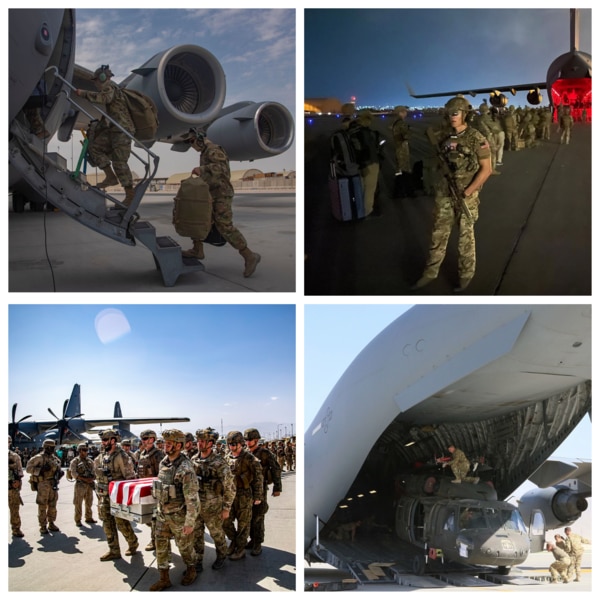
One year of Taliban rule: Expectations, promises and ground reality
Now, a year has been completed since Taliban rule in Afghanistan post-withdrawal.
In the first official press conference after taking over Kabul, a Taliban spokesperson Zabihullah Mujahid said that they would not seek revenge against government officials or the Afghan soldiers it had fought for the past two decades. Women would be permitted to work and study and will be very active in society but within the framework of what they considered “Islam”. (“Taliban pledges to respect women’s rights ‘within the framework of Islam’”, www.ft.com)
In another statement, Taliban spokesman Zabihullah Mujahid said that the Taliban had met “all the requirements” for their government to be given diplomatic recognition, however, the world needed to realise that political engagement with the Taliban was in everyone’s interest, as it would allow the world to formally discuss “the grievances” they had with the Taliban. (“Taliban Say US Is ‘Biggest Hurdle’ to Diplomatic Recognition”, www.voanews.com)
He added that the US was the biggest obstacle which did not allow other countries to recognise the Taliban government. (Ibid)
On 25 November 2021, Amnesty International reported:
“Since taking control of Kabul on 15 August 2021, the Taliban have imposed severe restrictions on women and girls. Apart from healthcare workers and a few other isolated exemptions, women have been told they cannot return to work or travel in public without being accompanied by a Mahram (male guardian).” (“Afghanistan: Women call on the international community to support women’s rights amid ongoing Taliban suppression”, www.amnesty.org)
Afghanistan had to face a severe economic crisis post-withdrawal, and the population struggled to find enough money to eat and access other essentials.
Afghanistan had reserves of more than $9 billion in the banks in the US and Europe, at the time of US withdrawal. Whereas, another $500 million belonging to individuals who hold accounts with privately owned Afghan banks is also frozen. The money had been managed by Da Afghanistan Bank, the central bank, and used as reserves to keep the currency stable, finance imports, and provide liquidity to the banking system. (“Afghanistan Still Wants Its Frozen Funds”, https://foreignpolicy.com/)
In February 2022, Afghanistan’s central bank “criticised Washington’s plan to use half the bank’s $7 billion in frozen assets on US soil for humanitarian aid and set aside the rest to possibly satisfy lawsuits over the Sept. 11, 2001 attacks.” Whereas, the US administration officials said that they would work to ensure access to $3.5 billion of the assets would benefit the Afghan people, amid calls for the money to be used to address a deepening economic crisis since the Taliban seized power last year. “The other half of the funds would remain in the United States, subject to ongoing litigation targeting the Taliban, including by relatives of those who died in the Sept. 11 attacks”, the officials said. (“Afghan central bank says U.S. plan for frozen funds an ‘injustice’”, www.reuters.com)
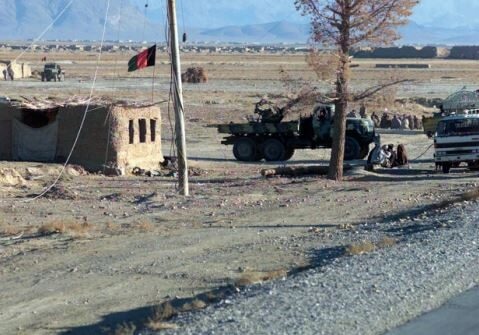
On 25 April 2022, alarmed by the critical humanitarian situation in Afghanistan, UN human rights experts called on the US government to unblock the foreign assets of Da Afghanistan Bank of more than $7 billion to enable the unimpeded provision of humanitarian assistance to cover the basic needs of tens of millions of people in the country. (“Afghanistan: UN experts call on US Government to unblock foreign assets of central bank to ease humanitarian impact”, www.ohchr.org)
The report stated:
“According to international assessments, Afghanistan has now the highest number of people in emergency food insecurity in the world, with more than 23 million in need of food assistance, and with approximately 95 per cent of the population having insufficient food consumption. Of particular concern is the vulnerability of more than 4 million internally displaced, including people belonging to minorities and more than 3.5 million seeking refuge in neighbouring countries.” (Ibid)
On 7 May 2022, the UN Assistance Mission in Afghanistan (UNAMA) issued a statement of deep concern, in response to an announcement made by the Taliban de facto authorities saying that women should only leave their homes in cases of necessity and then, with their faces covered in public.
The statement said:
“This decision contradicts numerous assurances regarding respect for and protection of all Afghans’ human rights, including those of women and girls, that had been provided to the international community by Taliban representatives during discussions and negotiations over the past decade”. (“Afghanistan: Taliban orders women to stay home; cover up in public”, https://news.un.org/)
On 14 May 2022, Deputy Prime Minister Abdul Salam Hanafi announced the first annual national budget since the Taliban took over. He said that the government foresaw spending of 231.4 billion Afghanis and domestic revenue of 186.7 billion. The authorities said that Afghanistan had to face a budget deficit of 44 billion Afghanis ($501 million). (“Taliban’s first annual Afghan budget foresees $501 million deficit”, www.reuters.com)
In an exclusive interview, senior Taliban leader Anas Haqqani told Al Jazeera how he saw the Taliban’s achievements and failures since 15 August 2021. He said:
“Over the past one year, we have brought huge and numerous … developments, chiefly among them is the freedom and independence as we rid our country of foreign occupation, injustice and oppression. This is what any people or country under occupation aspires to. It is a source of pride for us, it is also a blessing.” (“Q&A: Anas Haqqani on one year of Taliban rule”, www.aljazeera.com)
He further said that the Taliban had honoured the Doha Agreement, however, he said that numerous violations were committed by the US forces and the former Kabul government. He added that the sudden vacuum in Kabul was the reason for us to step in. (Ibid)
On the issue of women’s rights, he said:
“Now, you can see girls joining universities and schools up to grade 12. […] There are many measures still to be taken in all our ministries and other state institutions. Don’t expect us to achieve what others failed to achieve over the past 20 years amid the challenges we are faced with.”
In regards to the natural resources and economy of the country, Haqqani said:
“Now you see minerals and natural resources are being extracted using local and foreign companies”, and through these projects, “we are now able to generate revenues for the functioning of our ministries and other institutions”. Another source of revenue comes through customs duties. All these revenues used to fall in the wrong hands in the past. All the state revenues are now channelled into the central government’s treasury, central bank and Ministry of Finance. These were the most prominent examples of the progress we have made, Haqqani added. (Ibid)
In regards to world relations, he said:
“We aspire to enjoy good and friendly relations with all the countries”, and “it is also our duty to provide a dignified and comfortable way of life for our people. We are here to serve our people.” (Ibid)
On 15 August 2022, Amnesty International issued a report and stated that reports of various human rights violations from Afghanistan kept coming in and it was impossible to cover the full scope of those violations. However, the briefing aimed to document some of those serious violations. (“Afghanistan: The Rule of Taliban: A year of violence, impunity and false promises”, www.amnesty.org)
The report stated that despite the announcement of a “general amnesty” by the Taliban on 17 August 2021 for those who had worked with the US-led coalition and the previous government, hundreds of former security force personnel and government officials have been subjected to extrajudicial killings, over 80 journalists have been arrested, and there were ceaseless violations of women’s and girls’ rights. (Ibid)
On 24 August 2021 – just 10 days after their seizure of Kabul, the Taliban issued instructions to women and girls to stay at home. Then on 17 September 2021, the sign outside the “Ministry for Women Affairs” was taken down and replaced with that of the Taliban’s “Ministry for the Preaching and Guidance and the Propagation of Virtue and the Prevention of Vice”. (Ibid)
According to the survey of “Save the Children”, around 80% of secondary school girls are currently denied the right to education in Afghanistan; the organisation estimates that approximately 850,000 out of 1.1 million girls in this age group are currently forced to stay at home. (Ibid)
In regards to freedom of speech, the report states that the Taliban takeover has crushed progressive media, and Afghanistan has moved to stifle freedom of expression and dissent through harassment, intimidation, and detentions. A survey by Reporters Without Borders found that 43% of media outlets had disappeared within three months of the Taliban’s rule; 84% of female journalists and 52% of male media workers lost their jobs during this period.
In regards to the ethnic persecution, the report mentioned that “non-Pashtun Afghans being forcibly evicted from their homes and farms, so that the victorious Taliban could reward their followers with land taken from other groups, particularly Hazaras, Turkmen and Uzbeks. Evictions were reported across the country, including in Balkh, Helmand, Daikundi, Kandahar and Uruzgan provinces. Some Pashtuns were also targeted with land confiscation.” (Ibid)
There has been a sharp increase in IS attacks against Hazara people, a minority. IS attacks on minorities ensued, including one on a Sikh place of worship in Kabul in July 2022. (“Taliban rule in Afghanistan, one year on: ‘Women don’t want to stay here’ – photo essay”, www.theguardian.com)
While refuting the allegations that the Taliban were persecuting various ethnic groups, Taliban leader Anas Haqqani said in an interview:
“There is no truth to the allegations of the oppression of the Hazaras by the current government.” (“DER SPIEGEL Interview with Taliban Leader Anas Haqqani”, www.spiegel.de)
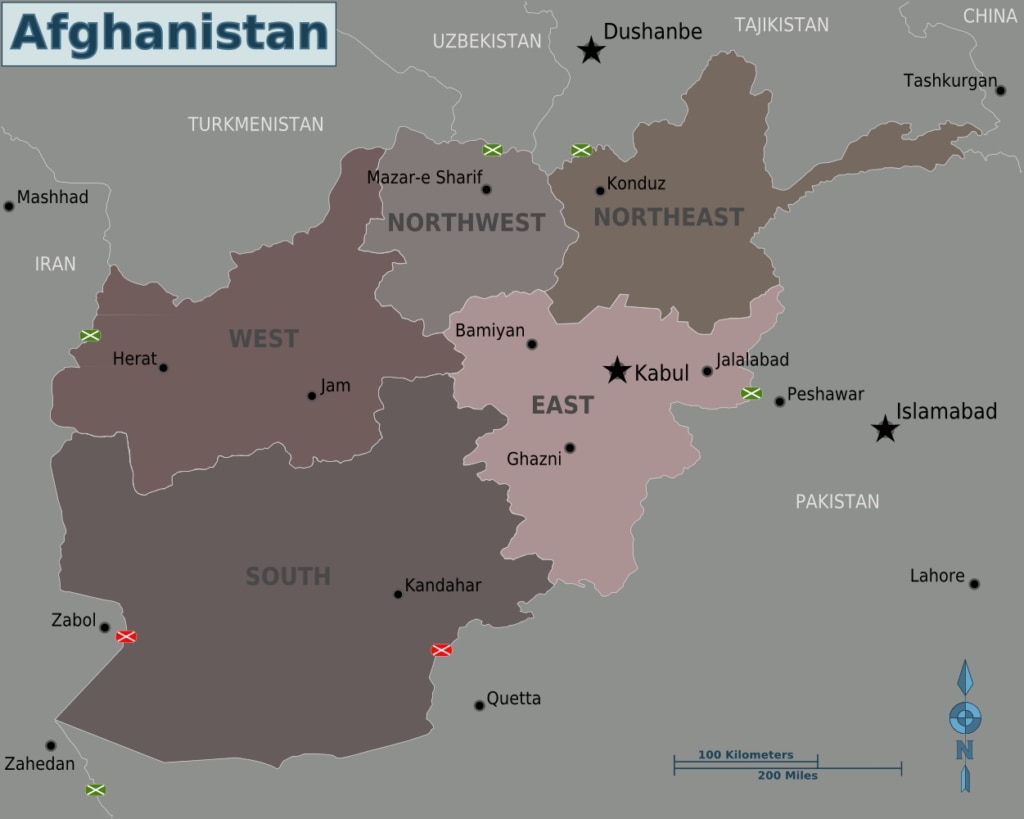
Who is to blame for Afghanistan’s current situation?
A major cause for the post-withdrawal economic crisis in Afghanistan is the freezing of billions of Afghan assets abroad, and the termination of foreign aid, on which the country was dependent during the past two decades.
In this regard, Human Rights Watch stated:
“The abrupt cuts of World Bank programs caused a massive drop in purchasing power across the country and had major impacts on both household and macroeconomic levels. Even if humanitarian groups are able in the future to increase food and cash distributions, they cannot make up for the impact of these cuts. At the World Bank, the US government used its dominant position on the board to revoke the Central Bank’s credentials, blocking the bank from receiving any World Bank assets, grants, or assistance.” (“Economic Causes of Afghanistan’s Humanitarian Crisis”, www.hrw.org)
According to the latest statements, the Biden administration does not plan to release billions of dollars of Afghan government assets held by the country’s central bank anytime soon. (“Biden administration does not plan to release frozen Afghan assets soon over concerns they may be diverted to terror groups”, https://edition.cnn.com/)
The question is, if the US could fund the so-called mujahideen – later to be known as al-Qaeda and Taliban – against the Soviets, then why can’t they grant aid or unfreeze the Afghan assets for the well-being of the people of Afghanistan who are waiting for the world to help them in this crisis.
The West had a huge responsibility, considering the fact that they themselves had played a big role in bringing Afghanistan to this point.
The ground reality is that the Afghan budget is in deficit, assets are frozen abroad, the world is unwilling to recognize the new Taliban government, and foreign aid has also been terminated since the change of power. Whereas, the West is expecting the Taliban government to run the country in a satisfactory manner. But how?
“The Biden administration did not end the war, but continued it by other means, which are turning out to be more violent and destabilising. The economic sanctions imposed by the United States and its allies are causing widespread, severe hunger in this desperately poor country.
“Unless those sanctions are soon reversed, it is estimated that more people will die from the economic impact of sanctions over the next year than the number who died in 20 years of war.” (“Biden’s sanctions on Afghanistan threaten to kill more civilians than two decades of war”, https://eu.usatoday.com)
Shah Mehrabi, member of the Supreme Council of the Central Bank of Afghanistan expressed:
The Taliban government “will blame the US for the country’s economic woes – and so long as they can point to the assets held frozen under US control, the people will believe them. The choice for the US government is simple: continue down the path that would lead to total economic devastation for millions of people or do what is needed to help the Afghan people. […]
“Afghans deserve to be safe and prosper in their land. But right now, US policy is holding them back. The US must allow the Afghan people access to their own reserves in a monitored, common-sense way, or the country will collapse. We have the power to lift the Afghan people out of this crisis.” (“Afghanistan’s economy is collapsing, the US can help stop it”, www.aljazeera.com)
No doubt, the Taliban must abstain from any inhumane policy, however, it is a fact that without a proper budget or a smooth economy, a country cannot run properly. Rather than solely blame the Taliban for the current situation, the Western powers will have to reckon how much responsibility lies with all of them for their involvement in Afghanistan’s decades-old conflict.
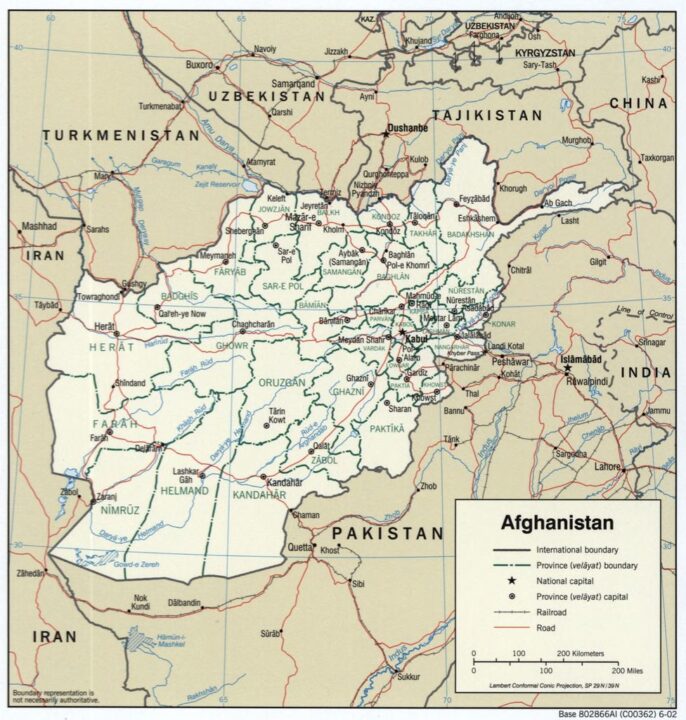
A continuous call for peace
On 6 October 2015, during his address at a special session of the Standing Committee for Foreign Affairs at the Netherlands National Parliament, Hazrat Khalifatul Masih Vaa said:
“Even in a state of war, justice and fairness are of paramount importance and when a war concludes, the victor must continue to be just and never resort to undue cruelty. However, in today’s world we do not find such high moral standards and levels of integrity; rather, after a war is finished, countries impose sanctions and restrictions that limit the progress of the defeated parties and prevent their nations from attaining true freedom or independence. Such policies are harming international relations and can only ever increase frustrations and have a negative impact.” (World Crisis and the Pathway to Peace, p. 179)
On 2 May 2022, during his Eid-ul-Fitr Sermon, Huzooraa said:
“The world is gradually heading towards destruction, and this is all because man is not paying heed to the rights of others and the requirements of justice. Had this been the case, then we would not have seen the destruction of Iraq, Syria, Afghanistan and now Ukraine. To inform the world of all this is our responsibility.” (Al Hakam, 6 May 2022, Issue 216, p. 2)
During a virtual meeting, while answering a question in regards to Afghanistan’s situation, Hazrat Khalifatul Masih Vaa said that for every nation, where there was progress, there was also a point of decline. When it reached a certain stage of decline, then Allah the Almighty could change its condition. It was possible, Huzooraa said, that when Afghanistan reached a further point of decline and fell close to destruction, then perhaps there might be someone among them who takes over again and establishes religious freedom, enabling Ahmadiyyat to be well established and with a prosperous future. Until then, there was no viable future. As the questioner was of Afghani origin, therefore, Huzooraa instructed him to keep praying as he was a native of that country and possessed true sympathy for his homeland. (Al Hakam, 17 June 2022, Issue 222, p. 2)
On 21 August 2022, during his concluding address at the Jalsa Salana Germany, Huzooraa said that the reason as to why there is global disharmony and unrest is because the intentions and aspirations of man are not pure.
Huzooraa added that today, undoubtedly, the world says that warfare is bad, and this is what every world leader says, but what they actually mean is, “If someone fights with us, then it is bad”, and, “If we start warfare, then it is not bad.” This is all because they have no fear of their Creator, Who has the power to provide peace to the world.
Huzooraa elaborated that if a nation’s enemy is helped and provided arms, then it is considered unacceptable, however, if that nation provides arms to another country, even if they are the perpetrators, then it is considered acceptable.
Huzooraa raised a pertinent question if this is the mentality of today, then how can global peace be achieved? (Al Hakam, 26 August 2022, Issue 232, p. 2)
May Allah enable all world leaders and rulers to act with justice, and may He enable those who call themselves Muslims to act upon the true teachings of Islam. Amin.
Related Content
- World War III: Hazrat Mirza Masroor Ahmad warned for almost two decades, but the world failed to take heed
- Hazrat Mirza Masroor Ahmad, the Ahmadiyya Khalifa had warned the world of Nuclear devastation
- USA, Russia, China, UK and France pledge to avoid nuclear war
- Europe at greatest risk of war in 30 years
- NATO, Russia and Ukraine: Rising tensions and a word of warning from Hazrat Mirza Masroor Ahmad
- Selective empathy: Western media’s horrific double standards amid Russia-Ukraine War
- The conflicts between Iran, Israel and the US
- Disaster in Yemen: Saudi, the West and warnings of Hazrat Mirza Masroor Ahmad (aa)
- Amnesty International: Israel imposes apartheid on Palestinians
- Riots in Kazakhstan and ramifications – Past warnings of Hazrat Khalifatul Masih
- Russia, the West & global catastrophe: We are at “doom’s doorstep” warns Doomsday Clock
- War in Afghanistan: Victory for the weapons industry
- The 6 & 9 August 1945 tragedy of Hiroshima and Nagasaki and the Ahmadiyya call for peace
- Taiwan Conflict: The world on a verge of war between the US and China
- Energy shortages, economic unrest and nuclear war: World leaders must heed advice of Hazrat Mirza Masroor Ahmad

